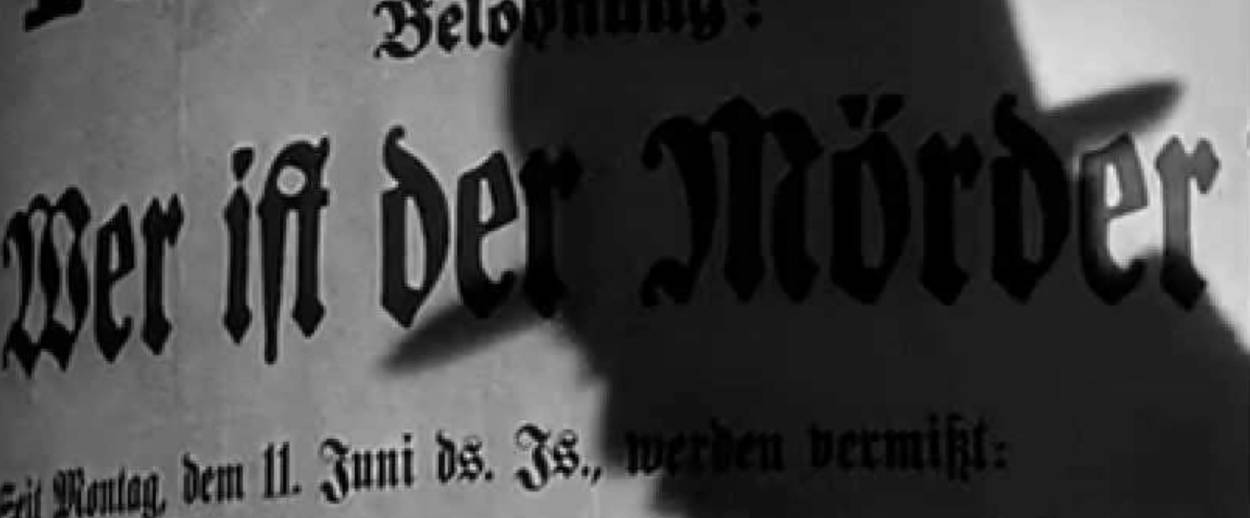What to Watch This Weekend: ‘M’
The story of a child murderer succumbing to his dark impulses in a town on the brink of chaos is not one you’ll soon forget




Every Friday, our resident film fanatic Alex Aciman will dig deep into the pile of cinematic masterpieces and fish out one forgotten classic you should watch soonest.
It has been 15 years since I first saw Fritz Lang’s M for the first time, and still, after all these years, the hairs on my neck stick up and my hands get clammy if I hear even just a few notes of Edvard Grieg’s “In the Hall of the Mountain King.” It’s probably one of the most sampled pieces in music history, and still all I can hear—like a long, hollow, interminable echo—is the sound of Peter Lorre whistling this tune all throughout M.
M is the story of a child murderer succumbing to his dark impulses while a town on the brink of chaos reckons with an epidemic of child disappearances. Peter Lorre is a solitary man living in a small German town, going about his ordinary life until he catches a glimpse of a young child. Then, his deathly whistling begins—his Edvard Grieg killing refrain. Soon another child is dead.
M is one of the greatest psychological thrillers, not only because it is psychologically harrowing for the audience, but because the film is so much more than a detective story. It attempts to peer into the killer’s madness, to show us the gears turning in his head. Part of this film’s genius is that we get such a frighteningly intimate glimpse into the life of the killer without actually feeling any sort of attachment to him. At first when Lorre’s character spots a child, he tries to keep his urge to kill beneath the surface. But finally, unable to resist, Peter Lorre approaches his victim and begins whistling. Lang doesn’t use these moments to humanize the killer, but rather as a way of showing us the psychology of his killer to amplify the thriller elements. Burned into my mind is the image of Peter Lorre’s face the moment his character begins to realize that he cannot control himself, that he will kill again. The whistling signals his relapse, and Lorre transforms right there on screen.
Understatement and subtlety help make this film unforgettable. Even the terrifyingly iconic whistling is often off-screen. You hear it, and already know what is about to happen. It is a film that takes place almost entirely in subtle glances, and in reflections of faces in shop windows.
Perhaps most impressive is that Fritz Lang directed this film in a way that was so deeply of-the-moment. In 1931, talking films were still early days but silent pictures already felt outdated. What Lang did was create a talking film that borrowed the kind of quiet horror developed in the silent-film era. It uses the best of both forms, and stands on the threshold of film history.
Alexander Aciman is a writer living in New York. His work has appeared in, among other publications, The New York Times, Vox, The Wall Street Journal, and The New Republic.